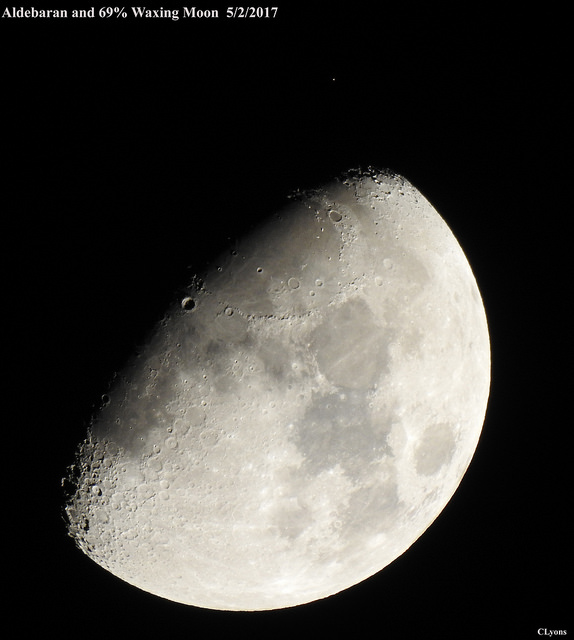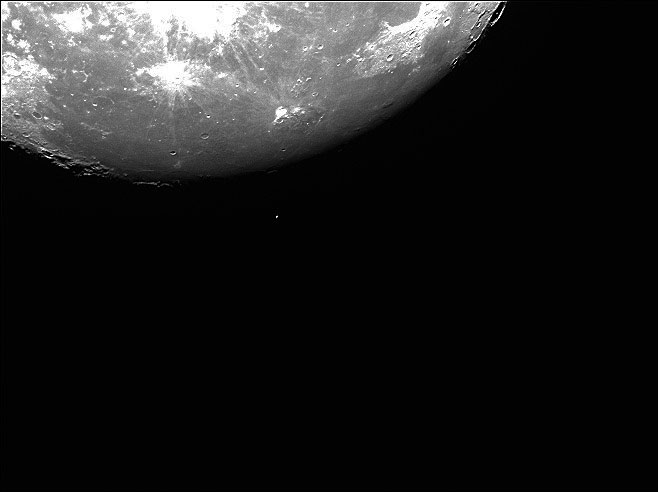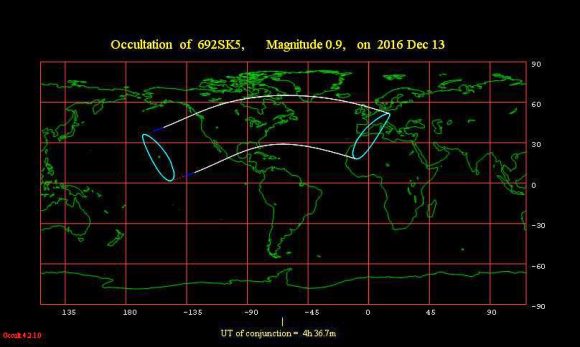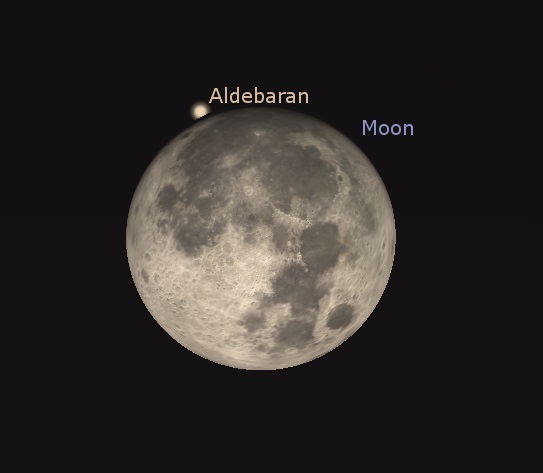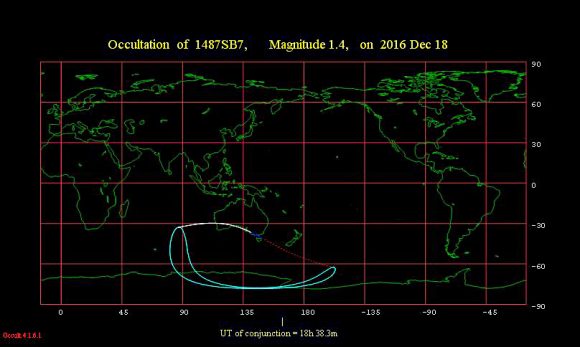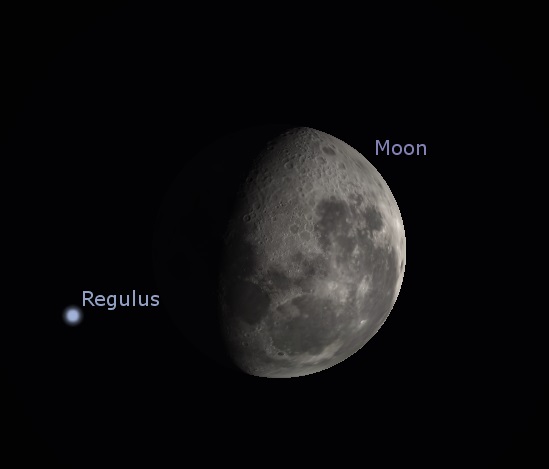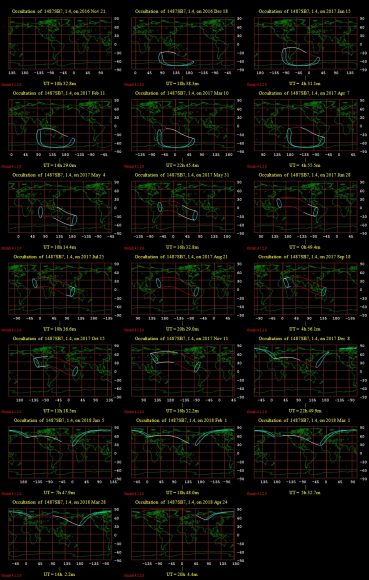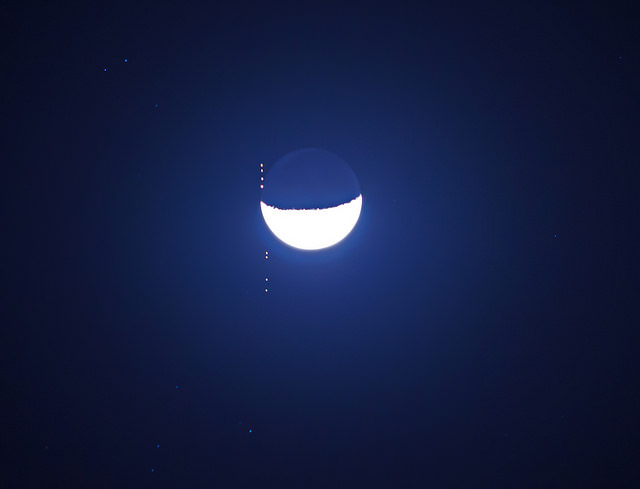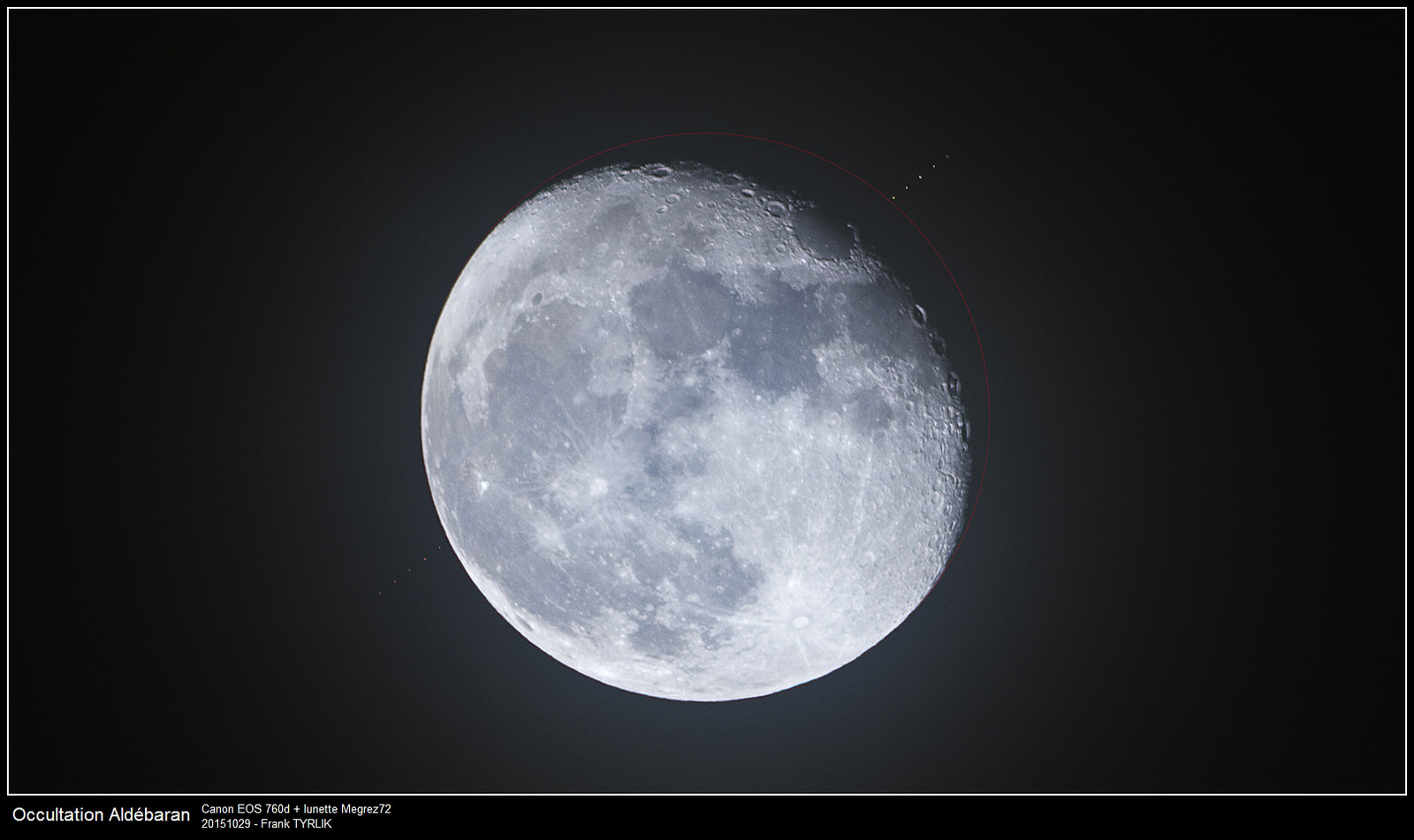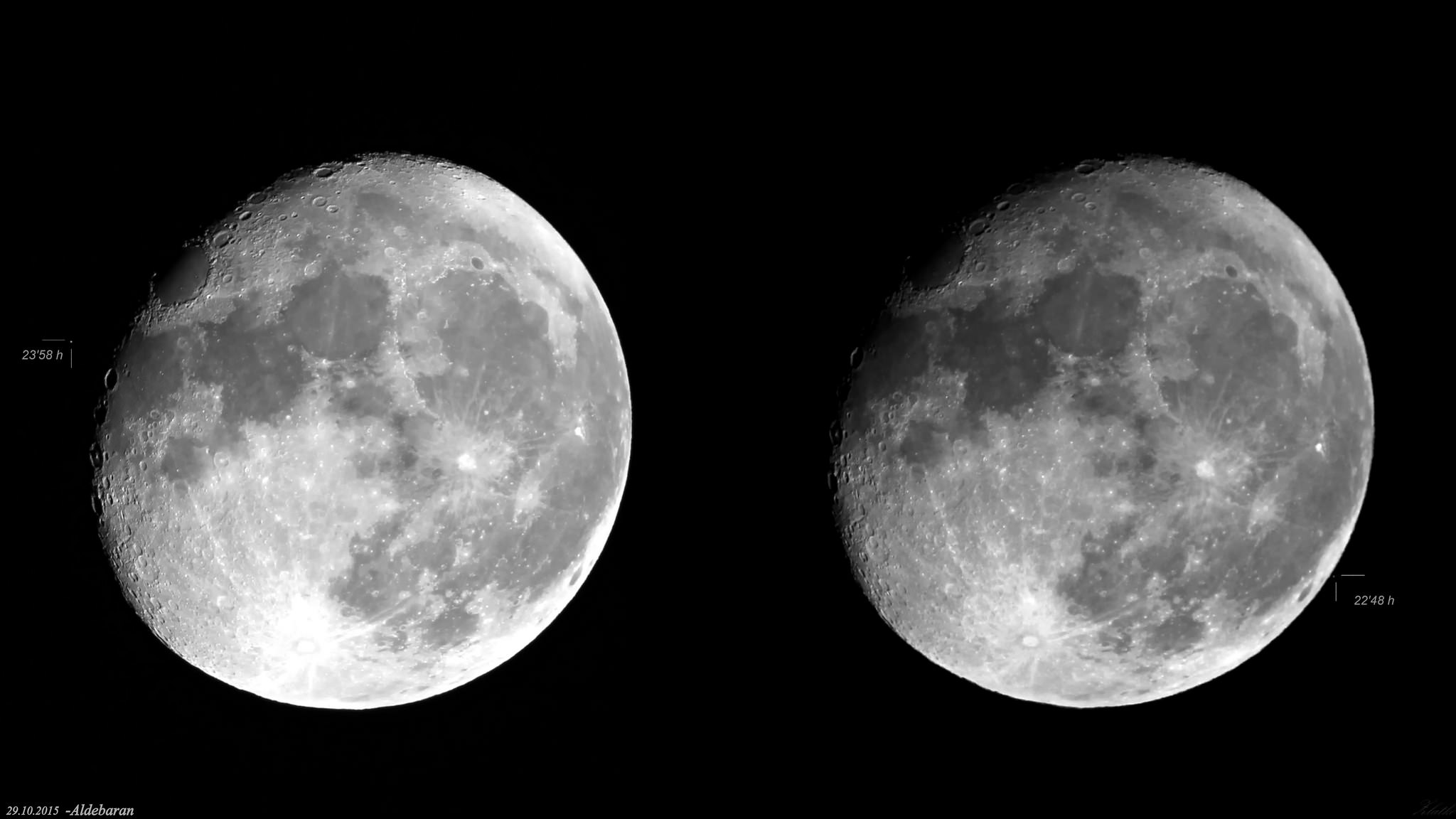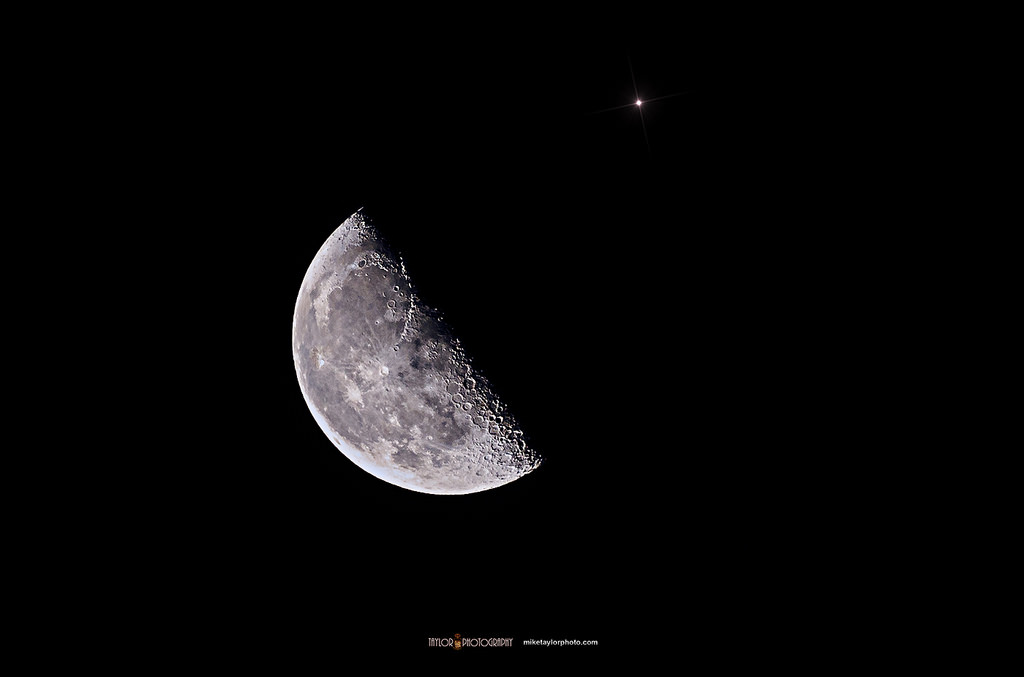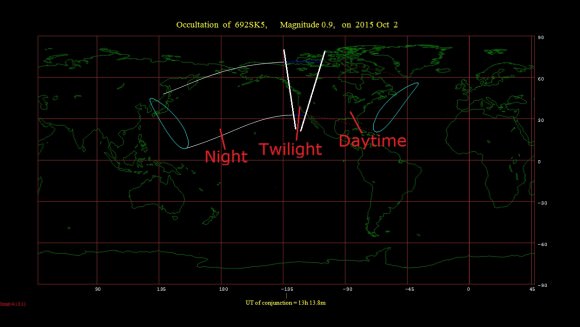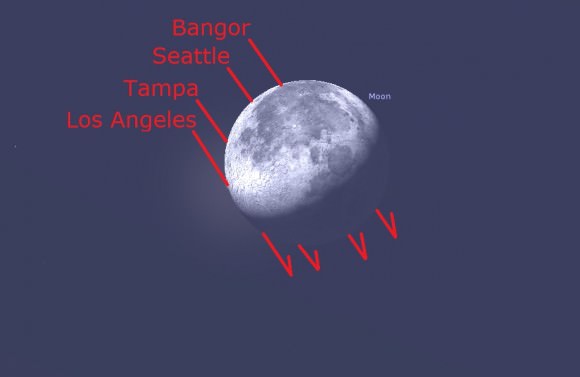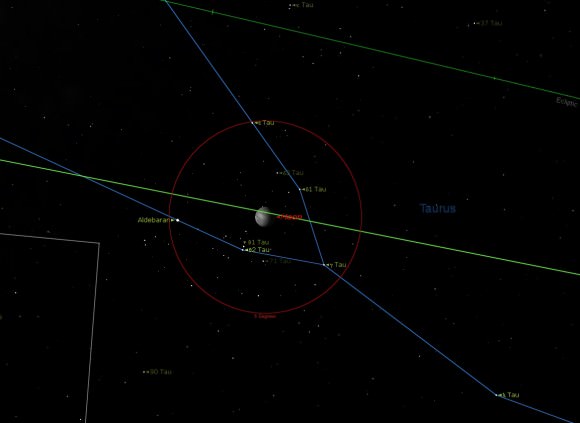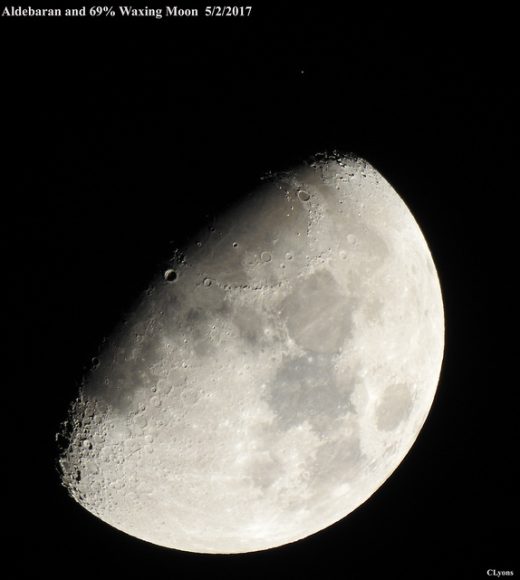
Ever watch the Moon cover up a star? There’s a great chance to see just such an event this coming weekend, when the waxing gibbous Moon occults (passes in front of) the bright star Aldebaran for much of North America on Saturday night, March 4th.
Shining at magnitude +0.85, Aldebaran is the brightest star that lies along the Moon’s path in the current epoch, and is one of four +1st magnitude stars that the Moon can occult. The other three are Regulus, Antares and Spica. This is the 29th in a series of 49 occultations of Aldebaran worldwide spanning from January 29th, 2015 to September 3rd, 2018, meaning Aldebaran hides behind the Moon once every lunation as it crosses through the constellation Taurus and the Hyades open star cluster in 2017. Like eclipses belonging to the same saros cycle, successive occultations of bright stars shift westward by about 120 degrees westward longitude and slowly drift to the north. Europe saw last month’s occultation of Aldebaran, and Asia is up next month on April 1st.
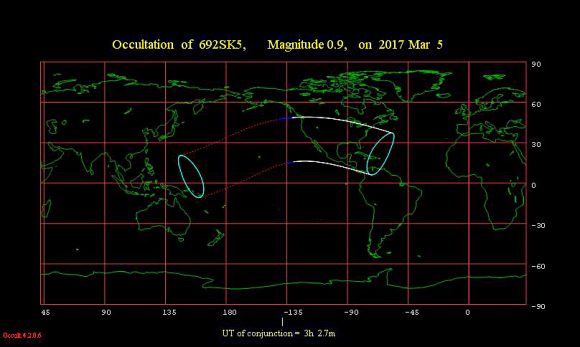
All of the contiguous ‘lower 48 states’ except northern New England see Saturday night’s occultation, and under dark skies, to boot. It’s a close miss for Canada. Mexico, central America and the Caribbean will also witness the event under dark skies. Hawaii will see the event under daytime skies. We can attest that this is indeed possible using binocs or a telescope, as we caught Aldebaran near the daytime Moon during last month’s event.
Occultations give us a chance to see a split second magic act, in a Universe that often unfolds over eons and epochs. The motion you’re seeing is mostly that of the Moon, and to a lesser extent, that of the Earth as the star abruptly ‘winks out’.
Observers in northern tier states might witness an additional spectacle, as Aldebaran grazes the northern limb of the Moon. This can make for an unforgettable sight, as the star successively winks in at out from behind lunar peaks and valleys. The graze line for Saturday night follows the U.S./Canadian border from Washington state, Idaho and Montana, then transects North Dakota, Minnesota just below Duluth and northern Wisconsin, Michigan and New York and Connecticut. Brad Timerson over at the international Occultation Timing Association has a good page set up for the circumstances for the grazing event, and the IOTA has a page detailing ingress (start) and egress times for the event for specific cities.
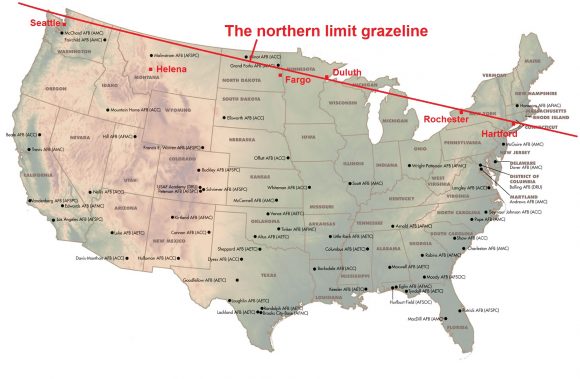
You’ll be able to see the occultation of Aldebaran with the unaided eye, no telescope over binocular needed, though it will be fun to follow along with optics as well. The ingress along the leading dark limb of the Moon is always more dramatic, while reemergence on the bright limb is a more subtle affair.
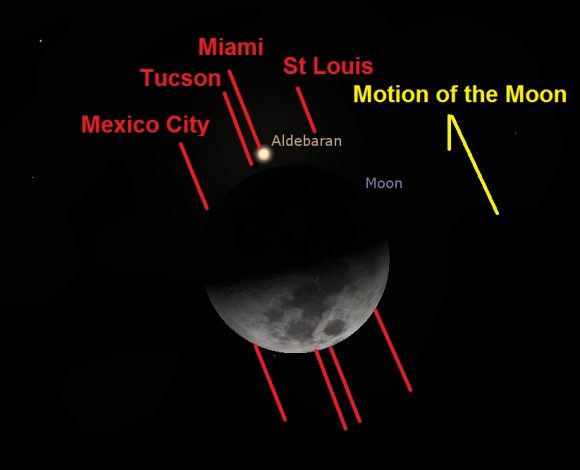
A simple video aimed afocally through a telescope eyepiece can easily capture the event. We like to run WWV radio on AM shortwave in the background while video recording so as to get a good time hack of the event on audio. Finally, set up early, watch those battery levels in the frigid March night, and be sure to balance out your exposure times to capture both Aldebaran and the dazzling limb of the Moon.
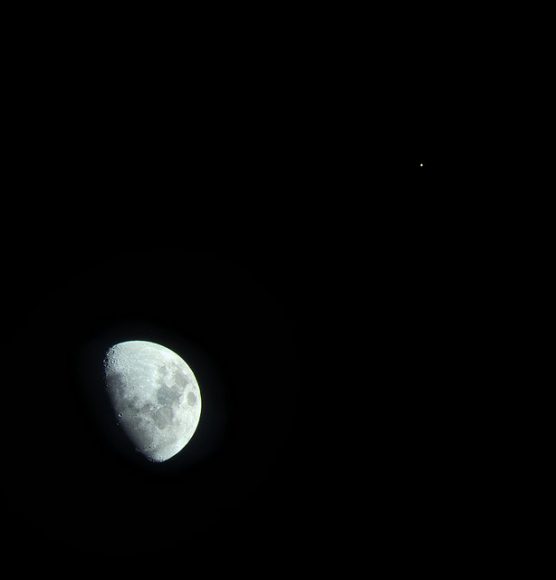
Anyone Live-casting the event? It’ll be a tough one low to the horizon here in central Florida, but a livestream would certainly be possible for folks westward with Aldebaran and the Moon high in the sky. Let us know of any planned webcasts, and we’ll promote accordingly.
The Moon also occults several other bright stars this week, leading up to an occultation of Regulus on March 10th favoring the southern Atlantic. Read all about occultations, eclipses, comets and more in our free e-book, 101 Astronomical Events for 2017 from Universe Today.
Don’t miss Saturday night’s stunning occultation, and let us know of your tales of astronomical tribulation and triumph.
-Send those astro-images in to Universe Today’s Flickr forum, and you might just see ’em featured here in a future article.

